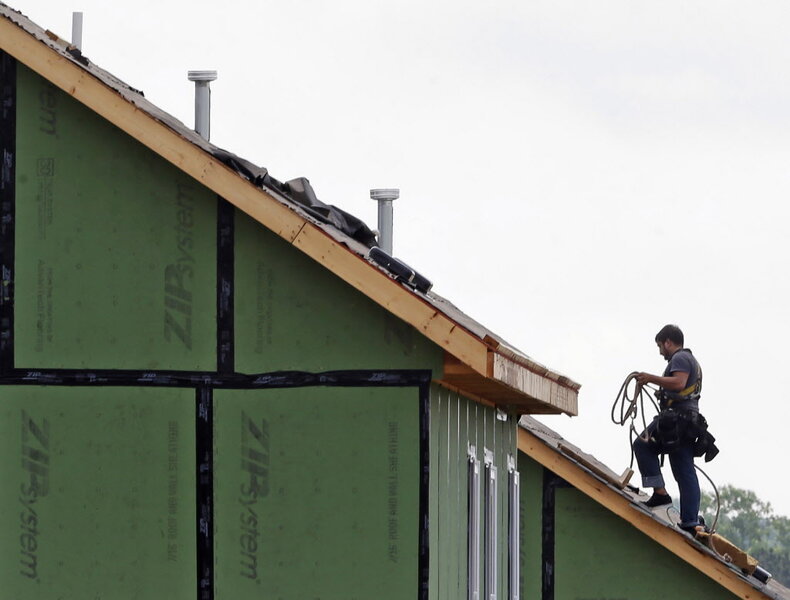Starter home dearth: Why existing home sales are plunging
Loading...
Supply in the housing market has been tight for the past few years, and data suggests it's starting to impact buying on a larger scale: sales of pre-owned homes in the US slipped 7.1 percent in February to a 5.08 million annualized rate, according to a Monday release from the National Association of Realtors (NAR).
But it may not be for the reason you think.
According to a separate study released Monday by Trulia, a real-estate listings website, the real reason for the current housing shortage isn’t a lack of new construction. Rather, it's the gap in prices between mid-level and premium homes that prevents starter homeowners from moving up and first-time buyers from moving in.
“Gridlock in the mid to low end of the housing market is one of the main reasons for the low inventory," Ralph McLaughlin, Trulia’s chief economist and the author of the study, told USA Today.
Trulia’s study examined three factors in the changing housing market for the four-year period from 2012 to 2016: 1) the number and share of inventory comprising starter homes, trade-up homes, and premium homes; 2) the change in the number and share of those homes available; and, 3) the affordability of those homes for different buyers.
The report found that the inventory of starter homes is shrinking at the same time prices are rising. This not only makes it harder and harder for first-time buyers to break into the market, but it also influences price fluctuation and home availability in other segments of the housing market.
Nationwide, the inventory of both starter and trade-up homes has declined by more than 40 percent since 2012. People buying their first home can expect to direct 5.6 percent more of their income towards a home purchase this year than they did in 2012.
NAR's existing home sales report reflects similar trends. The months' supply of available homes increased slightly in February to a still-tight 4.4 months, but fell year-over-year. The median price of a single-family home has increased 4.3 percent since February of last year.
"The supply of existing homes for sale remains an issue," IHS Global Insight economist Kristin Reynolds wrote in an e-mailed report. "In February, the number of homes available for sale declined from the same period a year earlier, and that has happened uninterrupted for the past nine months. In fact, single-family homes for sale were at their lowest February level since 1995."
"Despite continued price increases, homeowners are not yet deciding to list their homes for sale in greater numbers, leading to limited options for homebuyers," she continued.
That’s troubling for the approximately 93 percent of Millennials who want to eventually move into a place of their own someday, but some regional housing markets are better off than others. Trulia found that the biggest drop in starter-home availability occurred across the West and South. Salt Lake City saw the biggest decline, with the number of starter homes available dropping by 87.9 percent in four years.
The smallest decline occurred in Akron, OH, where starter home inventory only declined by 3.2 percent. In terms of affordability, the biggest increase in starter-home cost occurred in Oakland, where first-time buyers now have to direct 69.2 percent of their income towards buying a house. The smallest change occurred in Detroit; there, buying a starter home takes up only 9.6 percent of income.
Trulia attributes the reason for the low inventory in starter and trade-up homes to a combination of factors, including the number of foreclosed homes that were bought by investors during the recession and turned into rentals.
The current high cost for premium houses also plays a role. As prices for premium houses rise, it becomes more challenging for buyers looking to trade up on their current property to find an affordable home, which in turn makes them disinclined to sell. The Trulia study reports that the cost of premium homes has increased by about 20.3 percent since 2012.
Price cutoffs for Trulia's report were based on value estimates for the entire housing stock, not their listed price. National metrics are based on a weighted sum of listings and the weighted average for affordability in the 100 largest metropolitan areas nationwide.






